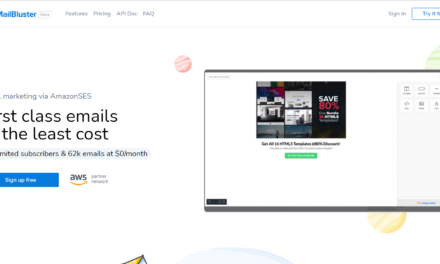Building an MVP (Minimum Viable Product) is a great way to test a business idea without committing too much time and resources. It helps entrepreneurs to gauge the market’s interest in their product and measure success quickly. However, once the MVP is built, what metrics should you use to measure its success?
Word of Mouth
 Word of mouth is a great way to measure the success of an MVP, as it shows that people are talking about it. If people are talking about your product, it means that they are interested in it. This is a great indication that your product is successful and that it is resonating with people.
Word of mouth is a great way to measure the success of an MVP, as it shows that people are talking about it. If people are talking about your product, it means that they are interested in it. This is a great indication that your product is successful and that it is resonating with people.
Engagement
 Engagement is another important metric to measure the success of an MVP. It measures how often people are using your product and how often they are returning to it. This is a great way to measure the success of an MVP, as it shows that people are actually using the product and finding value in it.
Engagement is another important metric to measure the success of an MVP. It measures how often people are using your product and how often they are returning to it. This is a great way to measure the success of an MVP, as it shows that people are actually using the product and finding value in it.
Sign-Up
 The number of people who sign up for your product is another important metric to measure the success of an MVP. This will help you get an idea of how many people are interested in your product and how many people are actually using it. This will give you a better understanding of the potential of your product.
The number of people who sign up for your product is another important metric to measure the success of an MVP. This will help you get an idea of how many people are interested in your product and how many people are actually using it. This will give you a better understanding of the potential of your product.
Better Client Appraisals Based on the Feedback
 Another way to measure the success of an MVP is to look at the feedback from your clients. This will give you an idea of how well your product is doing and if there are any areas that need improvement. This will help you make necessary changes to your product to make it more successful.
Another way to measure the success of an MVP is to look at the feedback from your clients. This will give you an idea of how well your product is doing and if there are any areas that need improvement. This will help you make necessary changes to your product to make it more successful.
Percentage of Active Users
 The percentage of active users is another important metric to measure the success of an MVP. It measures how many people are actively using your product and how often they are using it. This will give you an idea of how successful your product is and if it is resonating with people.
The percentage of active users is another important metric to measure the success of an MVP. It measures how many people are actively using your product and how often they are using it. This will give you an idea of how successful your product is and if it is resonating with people.
Client Acquisition Cost (CAC)
 The client acquisition cost (CAC) is another metric to measure the success of an MVP. This measures how much it costs to acquire a new customer. This will help you get an idea of how efficient your marketing efforts are and if you are getting a good return on your investment.
The client acquisition cost (CAC) is another metric to measure the success of an MVP. This measures how much it costs to acquire a new customer. This will help you get an idea of how efficient your marketing efforts are and if you are getting a good return on your investment.
Number of Paying Users
 The number of paying users is another important metric to measure the success of an MVP. This will help you get an idea of how many people are actually using your product and how much money you are making from it. This will give you an idea of how successful your product is and if it is worth investing in.
The number of paying users is another important metric to measure the success of an MVP. This will help you get an idea of how many people are actually using your product and how much money you are making from it. This will give you an idea of how successful your product is and if it is worth investing in.
Client Lifetime Value (CLV)
 The client lifetime value (CLV) is another metric to measure the success of an MVP. This measures the total value of a customer over the course of their lifetime with your product. This will help you get an idea of how much money you can make from a customer and how much you should be investing in marketing to acquire new customers.
The client lifetime value (CLV) is another metric to measure the success of an MVP. This measures the total value of a customer over the course of their lifetime with your product. This will help you get an idea of how much money you can make from a customer and how much you should be investing in marketing to acquire new customers.
Churn Rate
 The churn rate is another important metric to measure the success of an MVP. This measures the percentage of customers who are leaving your product. This will give you an idea of how successful your product is and if there are any areas that need improvement.
The churn rate is another important metric to measure the success of an MVP. This measures the percentage of customers who are leaving your product. This will give you an idea of how successful your product is and if there are any areas that need improvement.
Measuring the success of an MVP is an important step in any business. By using the right metrics, you can get an idea of how successful your product is and if it is worth investing in. This will help you make better decisions and ensure that you are getting the most out of your product.





